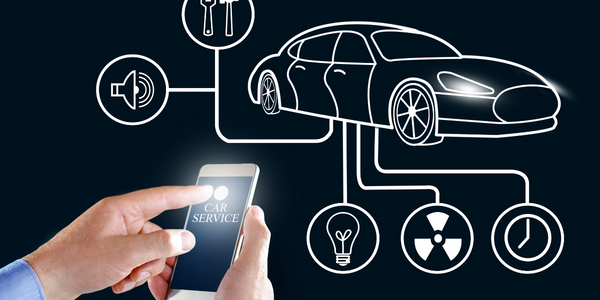Download PDF
Wimbledon 2015: Creating a unique digital experience to capture the moments that matter
Technology Category
- Analytics & Modeling - Real Time Analytics
- Cybersecurity & Privacy - Network Security
- Platform as a Service (PaaS) - Application Development Platforms
Applicable Functions
- Sales & Marketing
Use Cases
- Cybersecurity
- Real-Time Location System (RTLS)
Services
- Cloud Planning, Design & Implementation Services
- Cybersecurity Services
- Data Science Services
The Challenge
Wimbledon, organized by the All England Lawn Tennis Club (AELTC), is one of the world's highest-profile sporting events. To maintain its prestige, its digital experience must be second to none. The AELTC set a target of attracting 70 million visits, 20 million unique devices, and 8 million social followers during the two weeks of The Championships 2015. The challenge was to update the digital properties to adapt to a mobile-first world, while still offering the best possible desktop experience. The team also needed to build a special set of websites for the most important tennis fans of all: the players themselves.
About The Customer
The All England Lawn Tennis Club (AELTC) is the organizer of The Championships, Wimbledon, the oldest of tennis' four Grand Slams, and one of the world's highest-profile sporting events. The AELTC has been a global sporting and cultural institution since 1877. The AELTC's objective is to host the best tennis Championships in the world – in every way, and by every metric. This commitment is motivated by both pride and commercial basis. Wimbledon’s brand is built on its premier status: this is what attracts both fans and partners. The world’s best media organizations and greatest corporations – IBM included – want to be associated with Wimbledon precisely because of its reputation for excellence.
The Solution
IBM and the AELTC embarked on a complete redesign of the digital platform, using their intimate knowledge of The Championships’ audience to develop an experience tailor-made to attract and retain tennis fans from across the globe. The team built a secure web application that provided players with a personalized view of their court bookings, transport, and on-court times, as well as helping them review their performance with access to stats on every match they played. The team took advantage of a unique advantage: its access to real-time, shot-by-shot data on every match played during The Championships. Over the course of the Wimbledon fortnight, 48 court-side experts capture approximately 3.4 million data-points, tracking the type of shot, the strategies and the outcome of each and every point. This data is collected and analyzed in real time to produce statistics for TV commentators and journalists – and also for the digital platform’s own editorial team.
Operational Impact
Quantitative Benefit
Related Case Studies.

Case Study
Leading Tools Manufacturer Transforms Operations with IoT
Stanley Black & Decker required transparency of real-time overall equipment effectiveness and line productivity to reduce production line change over time.The goal was to to improve production to schedule, reduce actual labor costs and understanding the effects of shift changes and resource shifts from line to line.

Case Study
Jaguar Land Rover Speeds Order-to-Cash Cycle
At Jaguar Land Rover, vehicles physically move around the facility for testing, configuration setting, rework and rectification, leading to a longer search time to get each vehicle to its next process facility. The main goal is to minimize the vehicles' dwell time between end of line and the delivery chain which was previously a manually intensive process. Jaguar Land Rover's goal was to build on the success of an earlier RFID project and improve the efficiency of delivering vehicles to meet dealer orders.

Case Study
Enel Secures Italian Power Generation Network
Electric energy operators around the world are working to increase the reliability and cyber resiliency of their systems. This includes Enel, a global power company that manages and monitors the Italian power grid. This grid:• Serves 31 million customers• Has a net installed energy capacity exceeding 31 gigawatts• Includes more than 500 power generation plants,including hydroelectric, thermoelectric, and wind• Is managed and monitored by Enel 24/7/365• Is operated by Terna, the Italian Transmission System Operator (TSO)Enel is responsible for the availability of the grid’s underlying ICS and industrial network. It also manages Regional Control Centers and Interconnection Centers which connect with the TSO. The TSO manages the flow of energy to the grid plus controls and remotely regulates the power generation of power plants, increasing and decreasing power production as required. The complex system of interaction and cooperation between Enel and the TSO has strong security implications as well as operational and business challenges.

Case Study
Securing the Connected Car Ecosystem
In-vehicle communications and entertainment system hosts high-value or sensitive applications. API libraries facilitate communication and sharing of vehicle data. These API libraries are vulnerable to reverse engineering and tampering attacks and may even result in loss of passenger safety. Attackers can inject malware that may be able to migrate to other in-car networks such as the controller-area-network (CAN) bus which links to the vehicle’s critical systems. Software provided for dealers to interface with cars through the OBD2 port is vulnerable to reverse engineering and tampering attacks. Hackers may be able to abuse these tools to inject malicious code into the ECUs and CAN bus. Attackers can lift the cryptographic keys used, and use that to build their own rogue apps/software. Their cloned version of the original app/software may have altered functionality, and may intend to gain access to other in-car networks.

Case Study
Secure and Cloud-based Data Marketplace
The great promise of new connected concepts of industry like 'Industry 4.0' is their ability to deliver a historically unparalleled level of responsiveness and flexibility. While modern supply chains are already heavily integrated and designed to be fluid and fast moving, a large swathe of manufacturing still remains beholden to economies of scale, large production runs, and careful preplanning.The Industrial Internet of Things (IIoT) is set to change this by allowing small-batch or even custom manufacturing on a truly industrial scale. With machines whose functions are not set in stone, but flexible and determined by their operating software and with a new form of connectivity bringing industrial engineers, product manufacturers, and end users closer together than ever before. Ad-hoc adjustments to automotive parts, for example, during active product runs or the bespoke manufacturing of custom sneakers become very viable options indeed.Much of this remains a theoretical vision, but IUNO, the German national reference project for IT security in Industry 4.0 demonstrates the new capabilities in action with a secure technology data marketplace running a smart drinks mixer.

Case Study
Improve Postal Mail and Package Delivery Company Efficiency and Service
Postal mail and package delivery company wanted to replace legacy yard management system, increase inbound and outbound yard velocity, improve priority parcel delivery time and accuracy, reduce workload and overtime, reduce driver detention and measure performance and utilization of yard resources.





